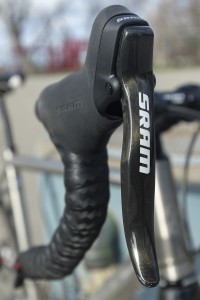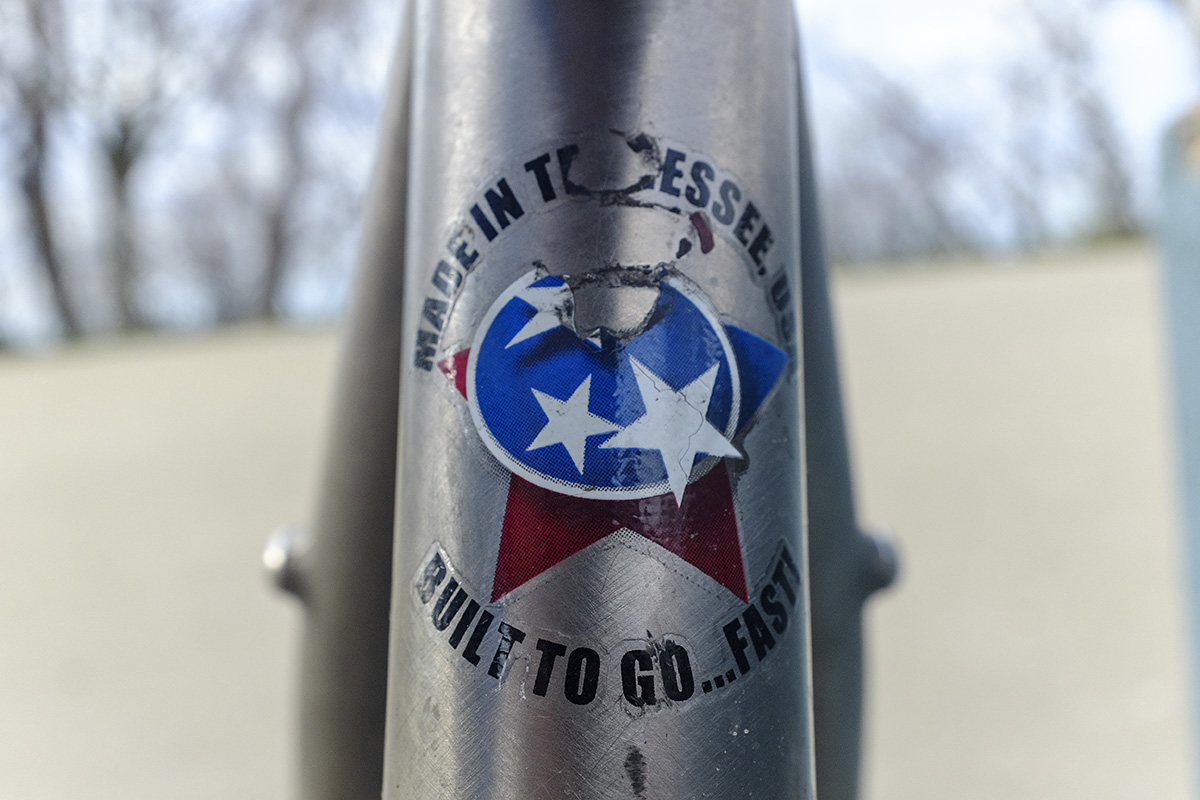
Choosing a bike for a long ride like the Silk Route is actually not necessarily all that complicated. As long as the bike is one that you are comfortable on and is of decent quality, it would do fine.
But for someone like me, a “bike nerd”, the situation is a great excuse to spend countless hours researching and selecting the very best components. So I did just that. I first built this bike last summer for Ride For A Dream, which I used as a kind of test run for the Silk Route.

The test went well, but I did make some changes to the bike. After all, the route from Toronto to the east coast is not nearly as demanding.
The first and most defining part of any bike is the frame. I chose the Kona Rove Titanium. Kona calls it a “freerange road bike”. It is similar to a cyclocross bike, but the geometry is tweaked a bit towards stability and comfort, as opposed to outright speed. It is designed to use disc brakes and has room for fat tires – two things I really wanted to have for this ride. The frame is handbuilt in the US by Lynskey, a company long known for their expertise in titanium frame building. It doesn’t come with a fork, but the Whisky Parts Co. No.7 carbon fork is a suggested match. The glossy finish scratches easily, so I covered it with 3M material usually used to protect the paint on high-end sports cars.

As you might guess, one of the more important components of a bike like this is the seat. A professional bike fitting includes the use of a device called the Ass-O-Meter, which is used to measure the distance between your sit bones. After using one of these aptly named tools, I determined that I needed a rather wider saddle, and chose the Selle Italia Turbomatic Gel Flow, which “has been loved by pro riders since it’s indroduction in 1998.” The Gel in the name means that it has a thin layer of gel for comfort, and the Flow designates the cutout in the middle of the saddle, to relieve pressure on certain parts of the human anatomy. You can read lots more about saddle fitting in Cervelo’s excellent article.

Choosing the handlebar, stem, and seatpost is usually not very complicated – you just need to select parts that will work according to your bicycle fitting. But of course I wanted nice parts – so I chose a Thomson seatpost and stem. Since Thomson only make carbon handlebars, and I wanted aluminum ones for durability, I chose a Ritchey WCS Logic II bar. It is a pretty stiff racing bar – I gave up a bit of comfort to have a bar that doesn’t flex when you really heave on the bike. Lizard Skins DSP 3.2mm bar tape is thick – very comfortable – and stays grippy even when it’s wet.


The drivetrain on the bike is a mix of components intended for both road and mountain bikes. The rear derailleur is a Shimano XT designed for mountain bikes – it allows for a really good hill climbing gear. The front derailleur is a Shimano Ultegra 6700, with a Shimano 105 crankset. I will likely have to replace the chainrings at some point during the trip, and the 105 crankset is the highest level Shimano one that doesn’t use $100+ chainrings. Road bikes these days generally use brifters, which combine the brake and shift levers into one unit. These are great for racing, since you never need to move your hands to shift or brake. But, their insides are crammed with tiny components that are nearly impossible to fix if broken. Bar-end shifters are much simpler in design, and are used with separate brake levers. After hearing that the newest Shimano shifters were unreliable, I was eventually able to secure a set of Microshift BS-T10 shifters, that can be switched between index- and friction-shifting modes. I am using an 11-36t cassette with a 50-34t crankset to create a great hill climbing gear, while maintaining an acceptable top speed.
Disc brakes on a road bike can be a bit complicated, since most disc brakes are designed for mountain bikes. I previously had a standard set of Avid BB7 brakes on this bike, with Tektro brake levers. But the levers were simply not a match for the quality of the bike’s other components. The bike now has the “road” version of the Avid BB7 brake calipers, which can be used with standard road bike brake levers. I am using somewhat rare Sram S900 carbon fibre brake levers, designed for singlespeed bikes. I didn’t choose these for the minimal weight savings of carbon fibre, but because the material doesn’t get as cold as regular metal brake levers in frigid weather, subsequently freezing your fingers.
Even very expensive bikes often combine high quality shifters, brake levers, brakes, and derailleurs with low quality cables. This actually makes a huge difference to the performance and feel of the bike. I used Yokozuna Reaction cables, which are not very popular but perform amazingly well.
Disc brake-compatible wheels for road bikes are still pretty rare, so I am using cross-country mountain bike wheels. They would be considered a bit light and not very durable for mountain biking, but for road use should be very strong. Hope Pro 2 Evo hubs are easy to service and perform well, but are very loud when coasting, something I have begun to get used to. The rims are Stan’s Crest 29 – some of the lightest mountain bike rims available.
Most of the Silk Route is on paved roads of decent quality, so I am using Schwalbe Marathon Supreme 28c tires. They offer a good mix of performance, comfort, and durability, and I’m bringing an extra set for when they wear out. I also have a set of Schwalbe Marathon Mondial 40c tires for the off-road sections of the trip.
I already said I was a bike nerd, but recently someone actually called me a bike nerd because of the bottle cages on my bike. They are made of titanium and cost an obscene amount compared to regular bottle holders. They offer essentially no benefit for the additional cost – but they are made of titanium.














Comments
9 Responses to “The Bike – Kona Rove Ti”